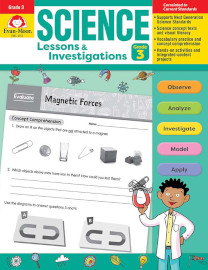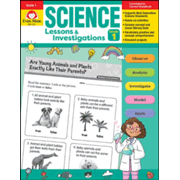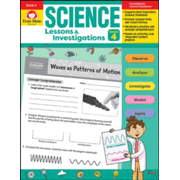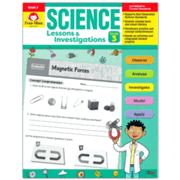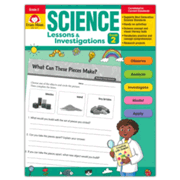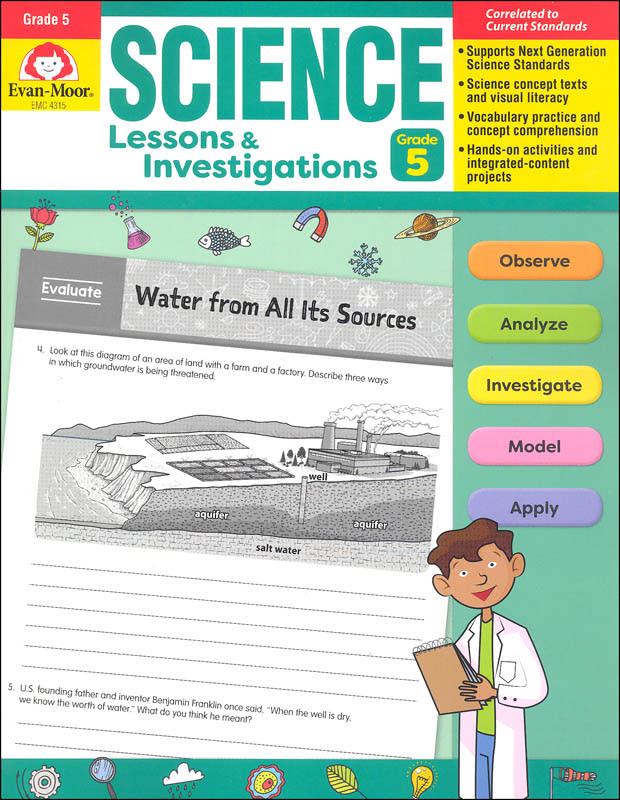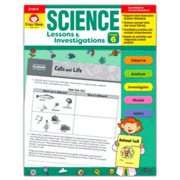Science Lessons & Investigations: Book 1 through Book 6 might be your primary science resource for grades one through three and a component of a science course for grades four through six. The lessons are aligned with Next Generation Science Standards.
One book for each level serves both students and teachers. All books have black-and-white pages with plentiful illustrations, and teachers can copy student pages from the printed book or print out pages from the e-book (PDF). The books include an answer key for vocabulary and comprehension activities.
Each book has more than 200 pages, divided into three units under the headings Life Science, Earth Science, and Physical Science. Each unit is divided into several lessons, with 12 to 14 lessons per book. Individual lessons will probably take two or three class sessions to complete.
Each unit opens with an overview that presents the key concept and objectives. Lessons include pages for students to read, do explorations, study vocabulary words, write in response to prompts, and work on an optional project. Interspersed among these pages are questions for students to answer regarding the explorations, vocabulary, and concepts. The courses provide some hands-on work and the development of observational skills without requiring a lot of time and expense.
The introductory reading material for each lesson includes a “Spark Question” for you to discuss before reading the explanation within the text. The informational text puts vocabulary terms in bold. Books for first and second grade teach the vocabulary at the beginning of the lessons, while the other books put vocabulary pages after some of the lesson material. If need be, students can skip ahead to study the vocabulary and complete the vocabulary activity page, then return to read the text once they understand the new words. The information in the lessons is substantive, and the questions that follow help students process and analyze what they have read.
The explorations involve both observations and experiments. They don’t require specialized equipment although you will sometimes need resources such as rope, colored pencils, a glass jar with a lid, and pinto beans. Students record information and data on formatted pages. Students also answer questions that require them to analyze what they observe. Some experiments ask students to predict what they think will happen, and then evaluate their predictions.
Writing prompts, designed to help students think more deeply about what they have learned, usually require writing and sometimes drawing. There are also optional hands-on activities that include science experiments, science observations, creative STEM activities (e.g., inventing something), art projects, and other cross-curricular activities.
The lessons are intended to be presented by a teacher who discusses the questions posed in the book and assists with explorations or optional projects. Young students will probably need help working through the rest of the lesson activities, while students who can read and write independently might prefer to work through most or all the lessons on their own.
There is plenty of content for children up through third grade; however, if you want to do more science, you might supplement with other science resources from Evan-Moor or resources from other publishers, such as one of the many nature study books I have reviewed.
Summary
Science Lessons & Investigations provides solid science education with hands-on activities while leaving time for taking science field trips, reading biographies of famous scientists, completing a month-long science unit study, or just catching up on other subject areas.




